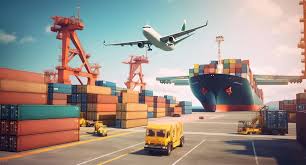Forest shipping, the travelling of timber from forests to digesting amenities or marketplaces, confronts numerous difficulties, prompting the introduction of revolutionary strategies to deal with them. Here is an investigation of the difficulties stumbled upon in forest shipping and the progressive strategies simply being adopted to get over them.
1. Ground and Ease of access:
Forests are usually based in distant or durable terrain, posing considerable problems for transport. Unavailable streets, sharp slopes, and undesirable climate conditions can restrict classic shipping methods. To beat these challenges, revolutionary options such as drone delivery and autonomous vehicles are discovered, supplying efficient and price-efficient alternatives for hauling hardwood in demanding situations.
2. Environment Affect:
forest shipping operations could have unfavorable ecological effects, such as deforestation, habitat exploitation, and toxins. Impressive procedures including environmentally friendly signing strategies, reforestation projects, and the usage of biofuels are now being applied to minimize environmental affect. Furthermore, advancements in logistics optimization and course planning are aiding minimize gasoline usage and co2 pollutants in forest shipping procedures.
3. Engineering Breakthroughs:
The incorporation of innovative systems is revolutionizing forest shipping, maximizing productivity, security, and sustainability. Actual-time monitoring techniques, RFID tagging, and blockchain technologies are now being used to track hardwood by reviewing the source in the forest to its ultimate vacation spot, making sure transparency and accountability through the offer chain. In addition, innovations in electrical and crossbreed vehicles are lowering reliance upon standard fuels, ultimately causing environmentally friendly forest shipping techniques.
4. Regulatory Agreement:
Forest shipping functions must conform to an array of restrictions regulating hardwood harvesting, transportation, and industry. No-concurrence can result in penalties, authorized fees and penalties, and reputational harm. To browse through these regulatory difficulties, innovative options including conformity managing application and digital allow systems are increasingly being used, streamlining administrative procedures and guaranteeing adherence to regulatory needs.
5. Provide Chain Durability:
The hardwood business, like lots of others, confronts disruptions a result of natural disasters, pandemics, and geopolitical instability. Creating resilience from the forest shipping provide chain requires revolutionary strategies such as diversifying travel routes, stockpiling vital supplies, and using data analytics to predict and mitigate possible disruptions. Collaborative relationships between sector stakeholders also play a vital role in enhancing offer sequence strength and ensuring continuity of operations.
To conclude, forest shipping confronts multifaceted difficulties that desire innovative solutions. By leveraging technical developments, embracing eco friendly practices, ensuring regulatory agreement, and fostering offer sequence strength, the forestry field can defeat these problems and get around towards an even more lasting and profitable upcoming.
